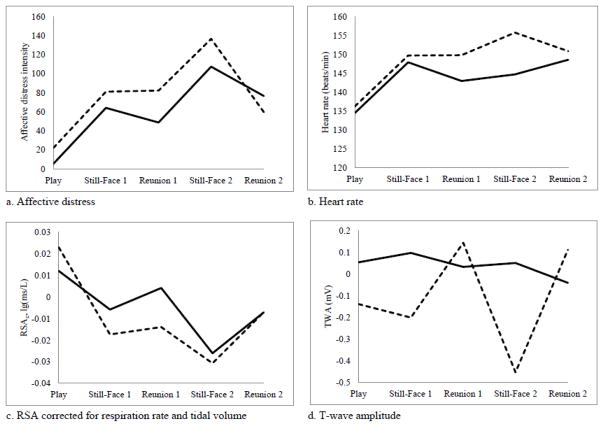Figure 1.
Infant affective distress, heart rate, RSAc, and TWA during the Repeated Still-Face Paradigm (SFP-R) by maternal sensitivity during the play episode. Solid lines indicate infants of sensitive mothers (scored ≥5 on sensitivity measure), with 25 dyads completing the play, still-face 1, and reunion 1 episodes, 19 dyads completing the still-face 2 episode, and 18 dyads completing the reunion 2 episode. Dotted lines indicate infants of insensitive mothers (scored < 5 on sensitivity measure), with 10 dyads completing the play, still-face 1, and reunion 1 episodes, 7 dyads completing the still-face 2 episode, and 4 dyads completing the reunion 2 episode. Using either a continuous or dichotomized measure of maternal sensitivity, the interaction term SFP-R Episode x Maternal Sensitivity was significant for TWA. In addition, main effects were significant for SFP-R episode for distress, heart rate, and RSAc, and main effects were significant for maternal sensitivity (dichotomized) for distress and RSAc. RSAc = respiratory sinus arrhythmia corrected for respiration rate and tidal volume. TWA = T-wave amplitude.

